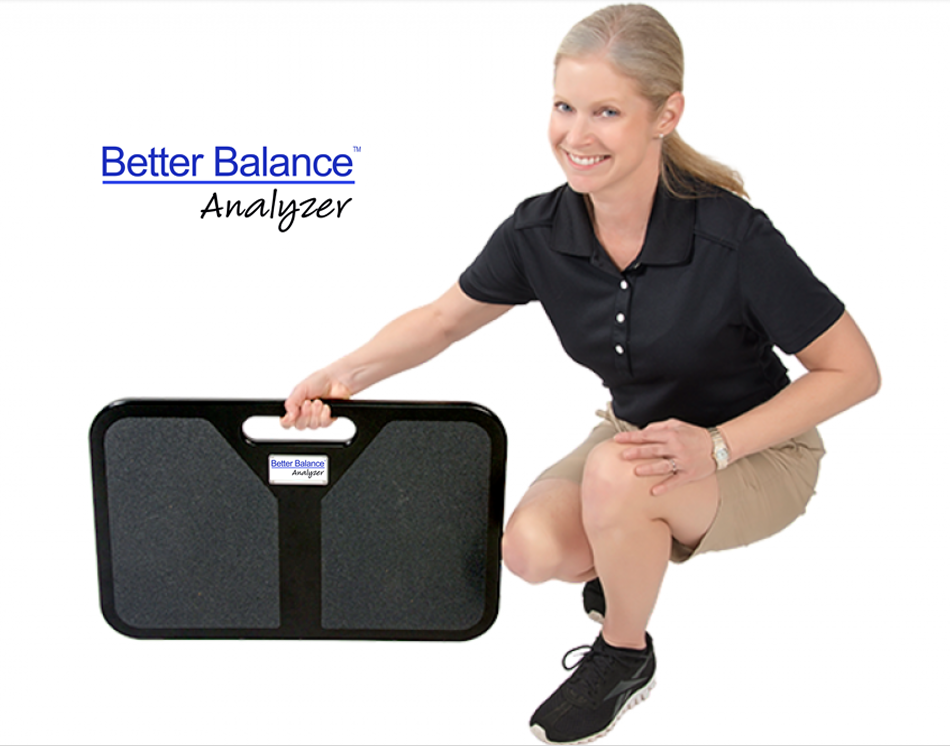Accurately Assess Patients with a Balance Assessment Platform

Accurately Assess Patients with a Balance Assessment Platform
For more than ten years, we have promoted the use of a balance assessment platform, which is a useful tool to assist with better identifying those at high risk of falling, including older adults. Many times, the patient will not report dizziness or instability to their health care team. By having patients complete a balance evaluation questionnaire along with conducting a balance assessment test with Secure Health's Better Balance Analyzer (BBA) platform, patients who test in the high-risk category can be more easily identified. These patients with sway and mobility issues are truly a fall waiting to happen.
Effective Fall Risk Assessment Tool
Balance assessment screening devices, such as the balance assessment platform combined with a balance evaluation questionnaire provide an accurate assessment for older adults.
--Effective for patients who don't self-report mobility issues
--Accurately assess physical function
--Improves thoroughness
--Helpful for guiding fall intervention
--Motivates patients and their care givers
--Better for monitoring progress
Your Fall Risk Assessment Stats
How many Fall Risk Assessment's (FRA's) are you doing every month? How many new patients do you see each month? Of the new patients, what is the number who are over age 60? How many Medicare patients do you see each month? Were you aware that the FRA using a balance questionnaire and assessment platform should be included with every annual wellness exam?
Statistically, here's what we have observed over the years. For every 10 patients over the age of 60 that you do an FRA, five will be low risk and another 2.5 will be in the moderate category. The remaining 2.5 will likely test as high risk with the results showing as "abnormal." In this case, further testing with the Clinical Test of Sensory Integration and Balance (CTSIB), may be warranted using the balance assessment platform, providing there are no complicating factors as determined by the physician.
After completing the balance evaluation questionnaire and undergoing a CTSIB, the physician may decide a videonystagmography (VNG) test is warranted to try to identify a vestibular disorder. Using proper protocol, you have created a clear pathway to medical necessity and quantitative justification for the VNG testing.
Balance Platform Assessments Help Guide Fall Intervention
When used properly, a balance assessment platform is an effective tool to establish a patient's falls risk assessment (FRA) and helps identify what, if any, further diagnostic tests are needed. It takes just five minutes to conduct a balance and falls risk assessment with a balance assessment platform. The data collected by the software quickly compares your patient's results with more than 20,000 others to give a very strong indication of a patient's risk of falling.
The patient stands on the platform with their feet about shoulder-width apart, arms at their side, and eyes closed for four twenty-second segments. Once completed, a report is generated with one of three categories:
- Low Risk
- Moderate Risk
- High Risk
Results are also shown in a chart that compares results to the normative database
After the Falls Risk Assessment (FRA), what's next?
Low Risk of Falls - No further testing is necessary at this time. FRA results should be included in patient files for future comparisons.
Moderate Risk of Falls - If the patient’s FRA results are in the moderate category, they should be further evaluated by the physician to determine if further testing is warranted. Further tests may include:
--Clinical Test of Sensory Integration and Balance (CTSIB) using the balance assessment platform;
--And/or the balance evaluation questionnaire.*
No further cause of action may be required at this time.
High Risk of Falls - If the patient balance assessment platform results indicate a high risk of falls, the patient should complete an additional test, the Clinical Test of Sensory Integration and Balance (CTSIB) with the balance assessment platform. CTSIB tests the four phases of the vestibular system using firm and perturbed (foam pad) surface with eyes open and then eyes closed.
Following the CTSIB test, the patient should complete a balance evaluation questionnaire.
After completing the FRA, CTSIB evaluation and balance evaluation questionnaire, the physician evaluates the results, in addition to existing patient history to determine if further testing is warranted. Additional tests may include videonystagmography (VNG), MRI or CT scans. The physician has enough data from these tests to determine medical necessity and make an informed decision to improve their patient's FRA or dizziness symptoms.
It's Time to Review Your FRA Protocol
Have you established your balance assessment protocol? Are you maximizing the use of your balance assessment resources? If not, it's time to review and decide what modifications you can integrate into your practice. Not only do you make a solid return on your investment with a balance analyzer platform, but also quantitatively establish why the VNG tests are warranted. Using the statistics we discussed earlier, does that not better establish the need for your VNG tests?
If you don't already have a BBA balance assessment platform or premium VNG equipment, call us to discuss adding these effective diagnostic devices into your practice. You will be pleasantly surprised by how this diagnostic equipment can work for you. I look forward to hearing from you soon.
--Dan Scherer, CEO
Secure Health, Inc.
260-804-4041 or premiumvng@gmail.com
Secure Health, Inc. has assembled the finest vestibular and balance products in the world. Our Better Balance™ technology is comprised of proven systems that identify, diagnose and treat vestibular and balance disorders. An essential component of our Better Balance™ technology is premium VNG diagnostic equipment manufactured by Difra Instrumentation. Difra Instrumentation is a global leading manufacturer of diagnostic balance disorder technology for more than 48 years. CALL 260-804-4041 FOR MORE INFORMATION or via email: premium.vng@gmail.com
